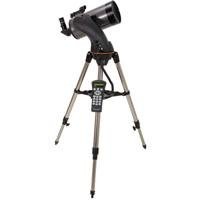If our Universe has a finite volume, which it apparently should have since it had a finite size at the time of its origin - the Big Bang event - 13.7 billion years ago, then it must have some sort of overall size and no doubt shape, a shape only apparent assuming one could view it from a suitable distance. So, what's the size and shape of our Universe and what determines that?
To start this off, one can not measure the absolute size of the Universe, because 1) its expanding, so its size is constantly increasing, but more to the point, 2) we can only measure what we can actually observe. Since light has a finite velocity, even if it is the fastest thing going, there could be objects so far out that their light hasn't had time enough to reach us yet, so we know nothing about them or the existence of the space that they reside in. However, one can surmise that if the Big Bang event happened 13.7 billion years ago, and given that the speed of light is the fastest velocity known, then presumably the Universe must have a radius of 13.7 billion light years.
But just to complicate things, we also can not know the absolute size of our Universe due to, and subsequent to, the Big Bang event because the expansion rate of our Universe keeps changing. It was usually thought that the expansion rate of our Universe must slow down under the very gravity that the Universe has. Whether or not it would ultimately stop, and reverse direction wasn't known - the jury was out. Then, in the late 1990's, it was discovered that the expansion rate of our Universe was accelerating, due to some mysterious antigravity force which is little understood, called 'dark energy'. So, the now current assumption is that the Universe will keep on expanding, ever expanding, ever faster and faster due to this repulsive force, 'dark energy'.
We can however in theory measure the shape of the Universe. The shape however depends on how much mass there is and how that arrangement of mass shapes space and time, or space-time. That is, if you could trace the pathway of a ray of light, how it travels ultimately depends on what mass it encounters and hence the pathway of light defines the shape. It all boils down to geometry. Just because the Big Bang event is viewed as a sort of explosion spewing out matter and energy in all directions, doesn't ultimately mean the Universe is spherical in shape.
If the Universe is ultimately going to tend towards becoming infinite in size (never actually getting there but ever struggling to get there), that's one possibility. That situation would arise if the expanding Universe were either flat (where the angles of a triangle add up to 180 degrees) or saddle-shaped (where the angles of a triangle add up to less than 180 degrees).
A saddle-shaped Universe suggests that beams of light will spread ever father and farther apart, even though encounters with clumps of matter will cause temporary and minor deviations. So, if you shine two flashlight beams parallel to each other, they will every so slowly diverge.
A Flat Universe suggests that a beam of light, while being deflected up and down, right and left, forward and backward, as it encounters various massive (light bending) objects, nevertheless ultimately and statistically tends to move in an overall straight line. The two flashlight beams, starting off in parallel, will in the long term remain parallel.
The best evidence to hand suggests that the Universe is flat. But, recall that your backyard is also flat, yet in practice it's got to have an ever so slight curve to it, because its part of the Earth's surface and the Earth's surface is curved. So maybe the Universe is likewise curved, but so vast that all that we can see appears as flat as your backyard!
Of course even a flat Universe could have a finite size (actually must have since the Big Bang event spewed out a finite amount of stuff), but still have an infinite amount of space available beyond to continue to expand into. This however runs counter to the standard model of cosmology, which states that space itself is expanding. I tend to go against that grain and assume that the expansion of our Universe is through pre-existing space.
What if the mass distribution is such that a light beam will be forced to ultimately curve back around like an ant crawling around the surface of a ball? Then the Universe is a closed Universe. The Universe is really a spherical Universe. Our flashlight beams will ultimately circle round the cosmos and smack us in the back!
If the Universe is always going to be finite in size, (spherical - where the angles of a triangle add up to more than 180 degrees), that's unsettling since the question to be obviously addressed is what's beyond the edge. The Earth is a finite sphere in size, but there's something beyond Earth's edge - beyond its surface. The Earth is actually unbounded, in that there are no boundaries to your traveling around, and around and around the planet, traveling in a constant direction, and always ending up back at your starting point. But, what if you travel in the 'up' direction? 'Up' is beyond the edge. But, if the entire Universe is closed and spherical, what's the equivalent of 'up'?
If the Universe has a finite size; a finite volume; a finite shape, it's probably fairly safe to assume the spherical and not some other shape, like a cube, or a pyramid or an irregular shape like a blob or like that of an amoeba. It would tax theoretical cosmologists beyond their breaking point I'm sure to come up with a cubic Universe! As noted above, an explosion, such as the Big Bang event tends to be viewed, tends to expand outwards as a sphere.
Could the Universe be far smaller than currently thought? If it is finite, yet unbounded like the Earth, a sphere, then light traveling away from any object will go around in a circle and end up back at its starting point. If the Universe is very small, then light from those objects will have gone round and round and round and round many times, and so we'll see multiple copies of whatever objects emitted the light in the first place. If all of the visible objects in the Universe are copies upon copies of just a few objects, then the volume enclosing the Universe could be a lot smaller than it has to be. We assume that each object we see in the distant Universe; each visible object we interpret as being a unique object. But, that distant galaxy we see way out back of beyond could just be a visible copy of our own galaxy!
In one sense, the size of our Universe is twofold. There's a maximum extent to which the fastest flung bits (stuff or matter) of our Universe, courtesy of the Big Bang event, have traveled. However, these bits of stuff or matter can radiate light (or other electromagnetic waves like radio or infrared) which travels even faster than the stuff and bits which emit them. So, the maximum size of our Universe is how far light, radio waves, infrared, etc. has been able to go from whatever radiating object is farthest away from the original point of origin. As noted above therefore, the Universe has a minimum radius of 13.7 light years.
An analogy: imaging 1000 cars in a parking lot. At time equals zero when the gun goes off, all the cars start off. Some cars head north (N), some south (S), some east (E) and some west (W). Some go off towards the NW, or SW or NE or SE. There are some drivers who decide that a NNE, SSE, NNW, SSW, ENE, ESE, WNW, or WSW direction is a good bet. Now 10% of the cars travel at 10 km/hour; 10% at 20 km/hour; 10% at 30 km/hour, etc. all the way up to 10% racing along at 100 km/hour. After one hour, the cars going at 100 km/hour form a sort of furthest away physical boundary around the original parking lot. But, each car is also blowing its horn, and the speed of sound is a lot faster than 100 km/hour. So, there's another, farther out boundary - a sound boundary.
Anyway, back to the shape of the Universe. Now the shape of the Universe will ultimately be determined by gravity or by how much mass the Universe actually has. Mass or matter (gravity) 'tells' space-time how to warp or curve; space-time 'tells' matter how to move. In other words, gravity is geometry. But if gravity is geometry, what is antigravity ('dark energy')?
I suspect the recent (1998) discovery of 'dark energy' might provide an additional clue or two to the shape of the Universe. Apparently 'dark energy' is an intrinsic property of space itself. It's causing the expansion of the Universe to ever accelerate, instead of the Universe decelerating as if only gravity existed. The reasoning, if you accept the standard model, is that if space itself is expanding, and if 'dark energy' is a property of space, then with every passing second more and more space exists, therefore more and more 'dark energy' exists, which in turn produces even more space ever more quickly, producing more 'dark energy', and so on. If that's so, there's no way our Universe will ever stop growing in size.
If gravity is geometry, 'dark energy' also has to be geometry IMHO, but of a different shape. Gravity is like a bowl. Place marbles around the rim, and they all come together at the bottom. The marbles are attracted to each other by the geometry they find themselves part and parcel of. However, 'dark energy' (antigravity) is dominating the Universe, so the Universe has to have an overall shape conducive to antigravity. Such a shape would be saddle-shaped (recall where the angles of a triangle are less than 180 degrees). Place the marbles at the top of the saddle, let them roll, and they spread apart, faster and faster. Or, instead of a saddle-shape, just turn the above mentioned gravity bowl upside down into a 'dark energy' geometry where the marbles run off and down the sides and separate ever faster and faster - just like our real observable Universe.
Even though the general evidence is for a flat Universe, recall the backyard analogy. The Universe could still be saddle-shaped (or upside-down bowl shaped), yet so big that our tiny corner just seems flat.
If we accept a saddle-shaped Universe as the overall picture, then embedded within this ever accelerating 'dark energy' antigravity dominated cosmic geometry are pockets of positive gravity, galaxies and clusters of galaxies, etc. like raisins in a loaf of raisin bread. Or, using the bowl analogy, there is an observable Universe that's akin to an upside down 'dark energy' bowl, but embedded within are tiny right side up gravity bowls that correspond to the positive gravity hunks of mass we observe, like the galaxies.
The ultimate key here is to get an absolute fix on how much mass there is in our Universe. That determines its overall shape, and will ultimately determine whether our Universe will tend more and more towards achieving an ultimate infinite size, or remain a manageable forever finite size.




